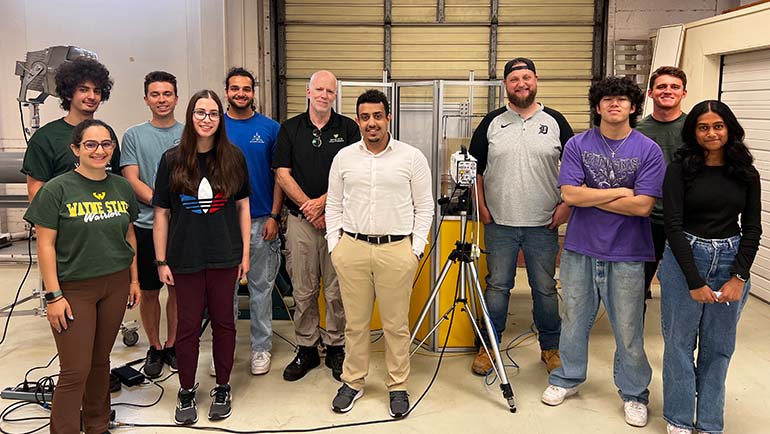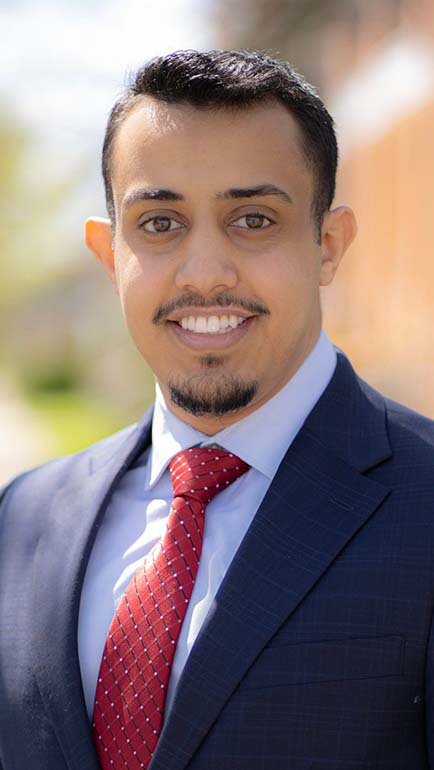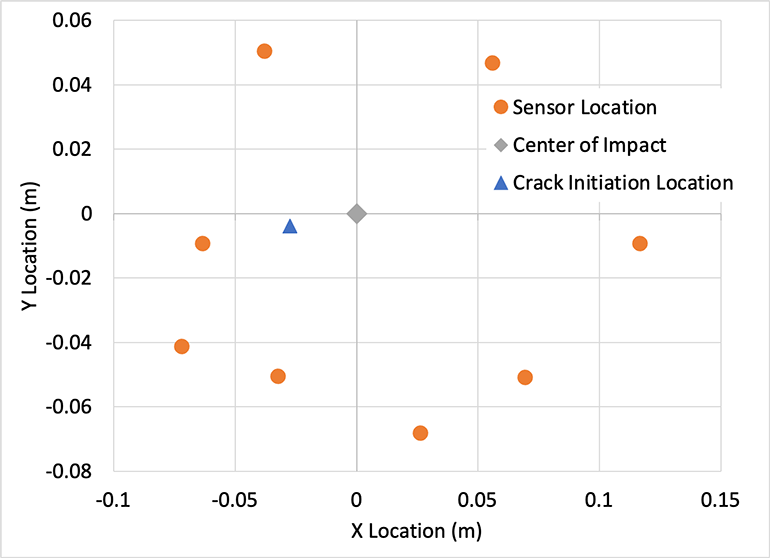
DETROIT – Wayne State University student Hesham Aldhaibani is making waves in the field of biomedical engineering with his innovative undergraduate research project on the acoustic assessment of rib fractures in behind armor blunt trauma (BABT) injuries.

This cutting-edge project, funded by Wayne State’s Undergraduate Research Opportunities Program (UROP), has the potential to revolutionize the way injuries are diagnosed and treated in both military and civilian settings.
Recognizing the need for a more effective and non-invasive method to assess these injuries, Aldhaibani embarked on his UROP project because it combines his passions for engineering, acoustics and medical science. His approach centers on the use of acoustic signals to detect rib microfractures. When a rib is fractured, it changes the way sound waves travel through the bone and surrounding tissues. By analyzing these acoustic signals, Aldhaibani hopes to create a diagnostic tool that can quickly and accurately identify small rib fractures in the field.
Aldhaibani became fascinated by the complex challenges of trauma injuries while studying the effects of blunt force on the human body. BABT is a particular concern, especially for military personnel who wear body armor in combat. While body armor can prevent penetration injuries, the force of an impact may cause significant internal damage, which can be difficult to diagnose without invasive procedures.
“There’s always a back force that comes with the use of body armor,” said Aldhaibani, president of the American Association of Yemeni Students and Professionals. “Even though bullets will not penetrate the body armor, you also get the back force, which can damage lungs and the rib cage. It can do a lot of damage creating microfractures, which can’t be seen or noticed, but you can still feel the pain.”
Aldhaibani, who graduated in May 2024 with a bachelor’s in biomedical engineering and begins his master’s program this fall, is collaborating with College of Engineering Professor Cameron Bass, Ph.D., who specializes in injury biomechanics and military exposures. The research duo is testing sensors affixed to the skin under body armor to detect sound frequencies that can identify microfractures not visible by traditional scans. The hydrophone sensors are commonly used to observe underwater movement of submarines and aquatic life.

“So far we’ve been able to analyze those signals and see a trend with the testing and know if there’s a fracture,” Bass said. “We’re also working to figure out if we can find a way to know exactly where that fracture is based on the relationship between all the sensors.”
The potential applications of this research are vast. In a military context, soldiers could be equipped with a portable device that uses acoustic signals to assess the severity of their injuries in real time, allowing for faster and more accurate triage.
UROP invites students from disciplines across the WSU campus — from medical sciences to the social sciences, performing arts and humanities — to participate in undergraduate research. These projects put theory into a learning-by-doing practice mentored by full-time faculty who are leaders in their field.
“Undergraduate students at Wayne State have learning opportunities that extend well beyond the classroom, allowing them to put their knowledge to work in real-world settings while gaining deeper insights and new perspectives,” said Ezemenari M. Obasi, Ph.D., vice president for research and innovation. “Through the UROP, students can connect with world-class faculty mentors to conduct, publish and present research. Providing hands-on learning opportunities for all Wayne State students is part of the College to Career initiative and key to ensuring they are career ready.”
As Aldhaibani continues his research, he remains focused on the goal of making a tangible impact. “I believe that this technology has the potential to make a real difference,” he said, “and I’m excited to see where it leads.”
At Wayne State University, undergraduate students have learning opportunities that extend well beyond the classroom, allowing them to put knowledge “to work” in real-world settings while gaining deeper insights and new perspectives. Through the Undergraduate Research Opportunities Program (UROP),students can connect with world-class faculty mentors to conduct, publish and present research. Providing hands-on learning opportunities to all Wayne State students is part of the College to Career initiative and key to ensuring they graduate career ready.
